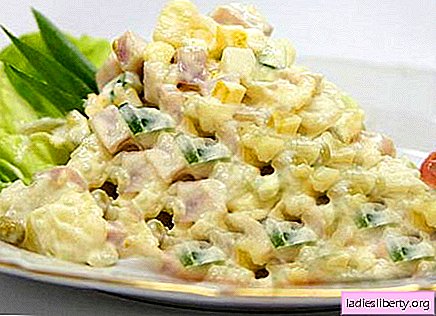
Levomekol is a combined drug used to treat purulent wounds. Available in the form of white ointments intended for external use. It contains in its composition such active active ingredients as methyluracil and chloramphenicol.
Useful properties of Levomekol
Levomekol is popular and is widely used in medical practice for the treatment of skin diseases. The composition of the ointment includes several medicinal components. This is an antibiotic, a stimulator of metabolic processes and other auxiliary substances that contribute to the uniform distribution of the drug, facilitating its penetration into the affected tissue. Thanks to these components, the ointment effectively fights against infectious and inflammatory processes.
To understand why Levomekol ointment helps, you can examine in detail its therapeutic effect on the affected organs. The effectiveness of the drug is due to such properties as:
• antimicrobial;
• restorative (reparative);
• wound healing;
• anti-inflammatory.
The therapeutic effect of ointment levomekol
Levomekol is a topical drug with pronounced osmotic activity, and has anti-inflammatory and antimicrobial effects. Effectively used to treat purulent wounds and ulcers.
The active component of chloramphenicol is a broad-spectrum substance with an antimicrobial effect. It actively acts on gram-positive and gram-negative microorganisms, as well as on streptococcus and staphylococcus, Pseudomonas aeruginosa and Escherichia coli.
The second active component of the ointment is methyluracil, which has a powerful anti-inflammatory effect and contributes to:
• rapid healing of wounds;
• increase local immunity;
• acceleration of cell regeneration processes;
• production of interferon.
Auxiliary substances are also present in levomecol:
1. Polyethylene glycol 1500.
2. Polyethylene glycol 400.
Polyethylene glycol 1500 has the ability to actively bind the fluid that is formed during the inflammatory process (exudate), with its subsequent "transfer" to the dressing. Exudate evaporates from the bandage, and the liberated molecules of polyethylene glycol 1500 can reattach the fluid from the purulent focus.
Polyethylene glycol 400 consists of smaller molecules that can penetrate directly into the tissue. Together with other components of Levomekol, it forms an active therapeutic complex. In this case, polyethylene glycol 400 acts as a conductor that transfers active substances to damaged tissues, to the localization of pathogens of purulent infection.
Thanks to all of the above properties, the ointment removes swelling around the focus of inflammation, and also cleanses the wound from purulent-necrotic contents. At the same time, Levomekol operates a place directly in the wound. Through the skin and mucous membranes, the drug penetrates only in small quantities. The therapeutic effect of the ointment persists for a day after application.
What helps ointment Levomekol
Levomekol is used to treat a variety of purulent wounds, also infected with mixed microorganisms. With its help, such diseases are effectively treated:
• bedsores;
• trophic ulcers;
• boils;
• carbuncles;
• hemorrhoids;
• sinusitis;
• ear diseases;
• paradantosis and other diseases of the oral cavity;
• runny nose;
• gynecological diseases;
• burns.
Acne Levomekol
Ointment helps to effectively deal with acne. It perfectly eliminates the inflammatory process, providing a powerful antibacterial effect. Levomekol should be applied directly to each pimple. The use of ointments on large areas of the skin can lead to a decrease in local immunity. It is important to remember that Levomekol does not cure the disease, but only temporarily eliminates the negative symptoms.
Another important point is that the skin quickly gets used to the drug, and as a result ceases to respond to its components. Therefore, the use of Levomekol with other means of a similar therapeutic effect, but containing other active active substances, should be alternated.
Burns of varying degrees (including infected)
Levomekol will help to effectively cleanse a burn wound from dead tissue. The algorithm for processing a damaged area of the skin looks like this:
1. Rinse the burn with cold water.
2. Apply a layer of ointment to a sterile gauze swab or dressing.
3. Put it on the wound.
Dressings should be done daily, treating the wound until complete healing.
Ulcers and purulent wounds
Levomekol is suitable for the treatment of almost any wound:
• cuts;
• dissection;
• bites of insects and animals;
• abrasions;
• scratches, etc.
If the wound is not purulent, then the ointment is applied after treating it with alcohol or hydrogen peroxide. If necessary, the wound should be bandaged or covered with a gauze bandage. It should be processed 1 time per day, until complete healing.
If, however, the damaged area is purulent, then before applying Levomekol, all detachable contents should be removed from it with a cotton-gauze swab. The dressing must be changed as necessary, up to several times a day.
Ear inflammation and sinusitis
The tourniquet soaked with Levomekol is inserted shallow into the ear, with its purulent inflammation. With inflammation of the maxillary sinuses, the drug will be used in a similar way.
Hemorrhoids
Hemorrhoids can be treated with ointment only in the acute stage, and not longer than 10 days. The essence of the treatment is to lubricate the anus at night with a remedy. Previously, the anus should be washed with warm water, while wiping with a towel.
Contraindications
A contraindication to the use of Levomekol is the presence of the following diseases in a patient:
• allergic to any component of the drug;
• psoriasis;
• fungal diseases.
It is also not recommended to use Levomekol for the treatment of children less than 3 years old. Particular attention should be paid to the compatibility of the ointment with other drugs. In particular, ointment should not be used simultaneously with drugs that inhibit hematopoietic processes. Such as sulfonamides, cytostatics, pyrazoline derivatives.
During pregnancy and lactation, it is not forbidden to use Levomekol, since it does not have a systemic effect.
Side effects and overdose
During treatment with ointment, unwanted side effects may occur in the form of a variety of allergic reactions, such as:
• itching;
• rash;
• redness;
• burning;
• angioedema.
The occurrence of any negative reactions due to the use of Levomekol is a reason for stopping treatment, followed by contacting your doctor.
Using the drug strictly for its intended purpose and according to the instructions, an overdose is impossible, and so far such cases have not been reported. But, sometimes with prolonged external use of the ointment, patients may experience increased sensitivity to the active ingredients.











